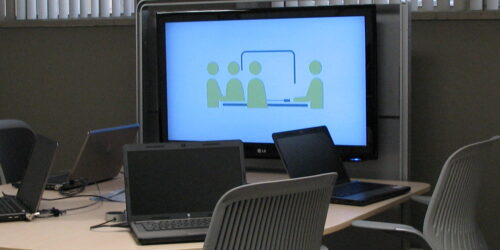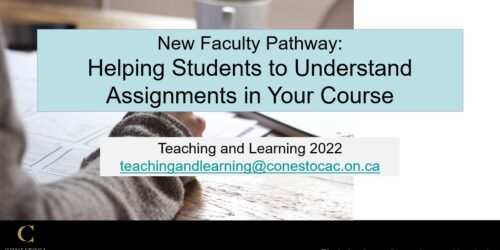Creating an Extra Loop in Assignments to Scaffold Students and Their Learning
This teaching tip explores the value of having students submit an assignment to further their achievement of the learning outcomes and to scaffold their ability to reach the assignment expectations. This developmental approach is equally valuable for domestic, international, and students with disabilities.
Once the Grade is Given, Students May Stop Learning
Once the grade is given, many students hardly care about the assignment or task anymore. This is truer for international students for whom past educational experience may have meant earning a grade was the ultimate goal. Their lower score is not going to improve their learning, and they still will not be able to meet the course expectations. Alternatively, we may provide some written feedback without creating an opportunity to use that feedback. “For feedback to be effective in moving students along the formative learning cycle, students must have an opportunity to use the feedback (Brookhart, 2020, p. 7). One solution is to create an extra loop in their assignment submission process.
Creating an Extra Loop Can Promote Learning
The process of writing an assignment should go through a scaffolding process; that is, students get a second chance to improve their score if they want to. Creating this additional loop in the completion process of some assignments will create a huge difference in students’ learning. Let us explore some ideas to create an extra loop.
Preview and Guide the Work
Faculty can offer an additional date before the final submission date to have a look at the assignment. This can be done in a structured way by allocating 5% marks for the draft submission. This will motivate the students to go through the extra loop and improvise their initial work. The 5% should be a part of the rubric. Provide a set of tips, return the work to the students, and provide them with time to complete and return the work. The faculty quickly scans the document and points out 3-5 issues that need to be addressed. Students can revise the paper and resubmit the paper.
Set a Check-in on a Certain Date
In the remote mode of teaching, since we can work asynchronously, Professors can ask the students to work in live documents. Students can work in their own time and space; the teachers can simply open those live documents and offer feedback on a set date.
Add a Reflection
In the final version of the submission, students can add a paragraph explaining what they found challenging in the resourcing and writing of the document and what they would do differently next time. This step will allow students and teachers to see the look forward to future changes and improvements. Marks should be added to the rubric for this.
Provide Ongoing Support
In the synchronous meeting time, there should have been some time allocated when students ask specific questions about their assignments.
The ideas mentioned above are based on the principles of the ‘work-in-progress’ process. Therefore, structurally, we can create an environment where some projects and assignments go through a work-in-progress step reviewed by the professor to enhance learning and engagement. Also, if the students develop a draft, faculty can avoid the challenges of students not submitting the assignment on the due date.
References
Brookhart, S. (2020, May). Five formative assessment strategies to improve distance learning outcomes for students with disabilities (NCEO Brief #20). National Center on Educational Outcomes.



